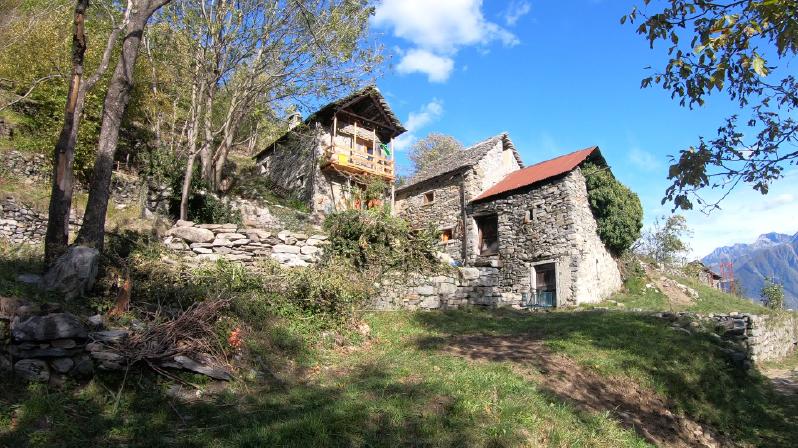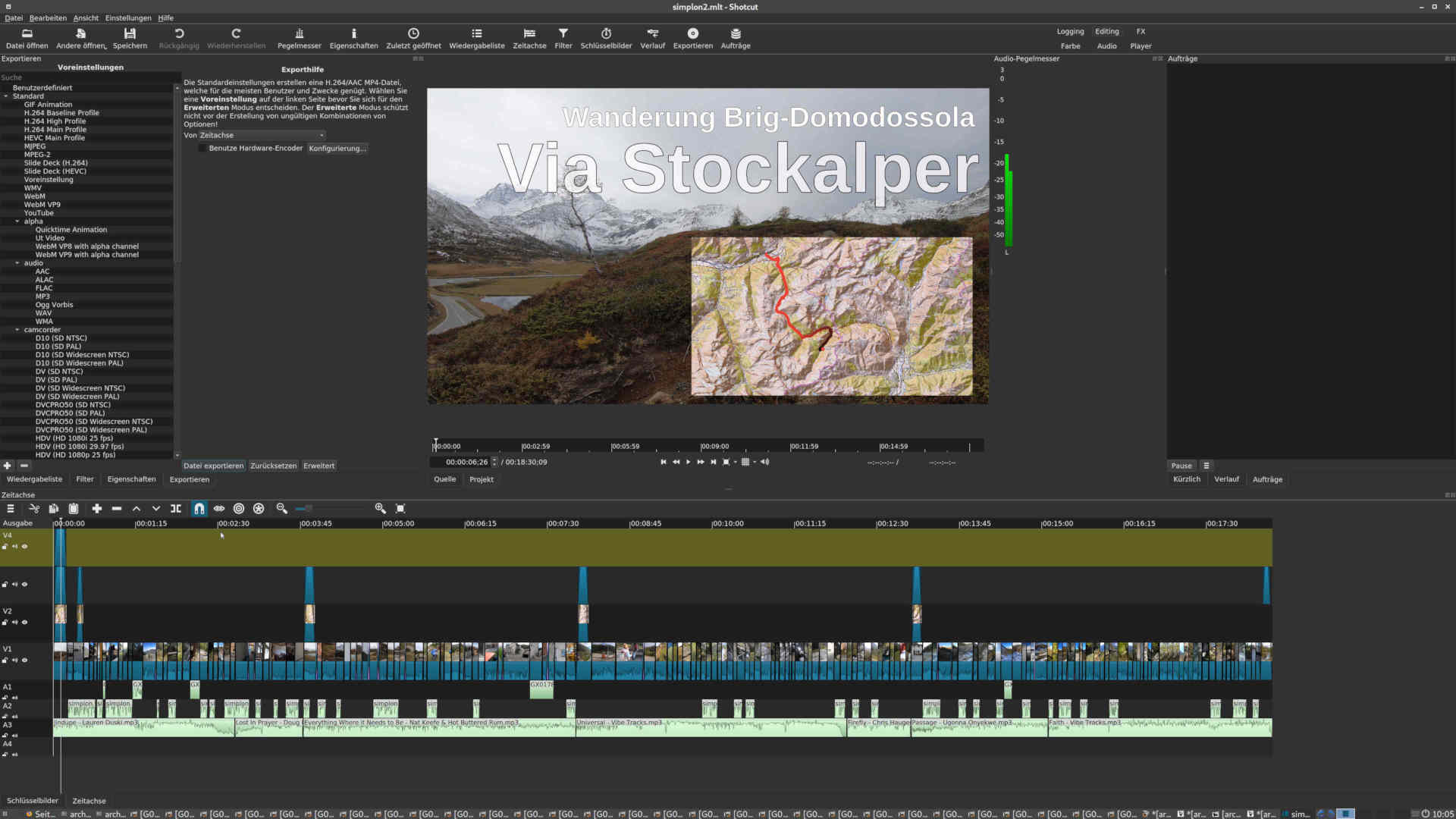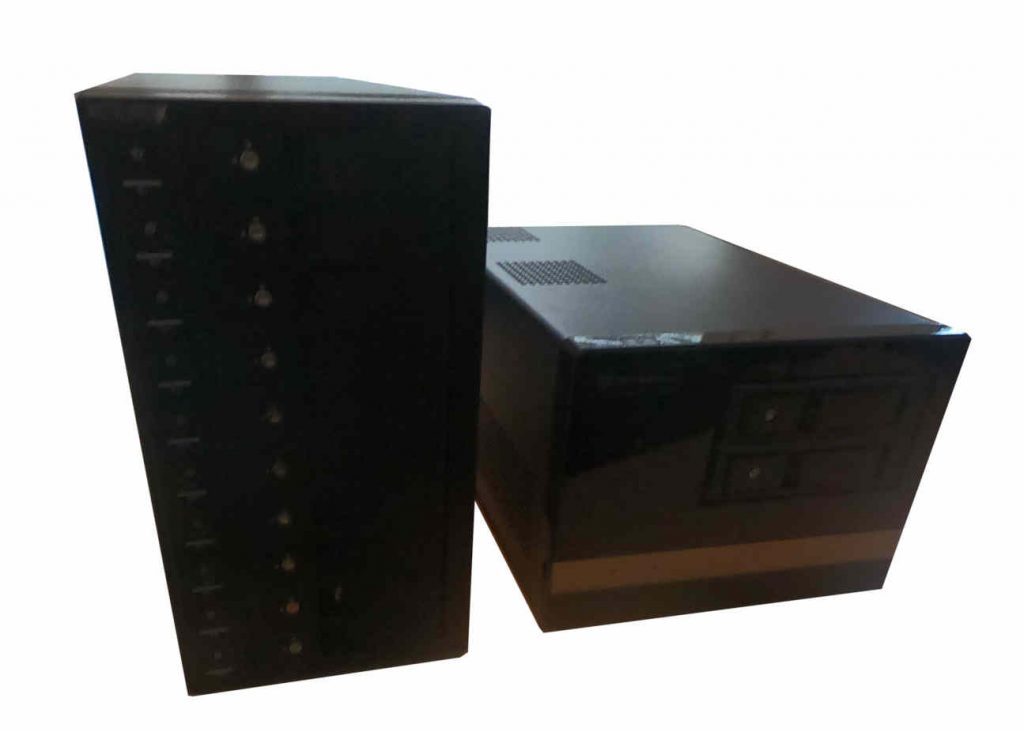Multimedia Management System for Shotcut and Kdenlive
Egg, October 21, 2020: Admittedly, the term Multimedia Management System (MMS) is probably not familiar to many people. A “normal” DMS (Document Management System) is about the efficient management of individual documents. This is not enough for multimedia content or projects, as a project can easily consist of several hundred files. In contrast to a DMS, a Multimedia Management System (MMS) can efficiently process and archive many files, even very large ones, with direct links to editing programs. The following blog shows how easily this works with the ArchivistaBox 2020/X.
Shotcut new on every ArchivistaBox
From Version 2020/X onwards Shotcut is now available on every ArchivistaBox (and of course also on AVMultimedia). With Shotcut video projects can be realized extremely easily. Shotcut also works extremely efficiently on contemplative hardware.
Other programs (e.g. Kdenlive) may well be more powerful. But Showcut is easier to use. This leads to faster work, because where less menus, forms and options are available, the work can be done more quickly.
Problems with archiving of video projects
A classic video production consists of hundreds of files, which are combined to a complete work (project). There is a central project file, which compiles the individual files in a kind of script.
In simple terms, the project file contains instructions such as playing video file Y for 15 seconds on track 1 from position 24 seconds and fading in video file Z for 5 seconds from second 20 on track 2 with 50 percent size. It is not easy to do this, because the included files can be spread over different directories and/or hard disks.
If included files are moved and/or deleted later, or if an external hard disk with files is not in direct access, it is almost impossible to post-process a project because the project file can no longer find or play the included files.
It also becomes difficult if, for example, video or audio files are to be used in several projects. Often the required files are stored several times in different project folders. This leads to a considerable additional consumption of memory.
ArchivistaBox for Shotcut and Kdenlive
This is where the ArchivistaBox 2020/X comes in. Both shotcut and Kdenlive projects can now be automatically transferred to the ArchivistaBox with a single tool. The links contained in the project file are analysed. Any files found are transferred to the archive. Each file is checked to ensure that it is not archived.
Archived video projects can be exported again as a project in a new project folder at any time using the ‘Export source files’ function in ArchivistaDMS. If a project has changed, it is sufficient to upload the new project file to the archive (MMS) again. Only those files that have been newly added or are not yet in the archive are processed or added.
ArchivistaBox 2020/X offers support for up to 200 TByte
Video projects generate considerable amounts of data. At 4K this is easily 10 GByte per hour. This means that 4K with an 18 TByte hard disk can manage up to 1800 hours of recordings, while FullHD can manage up to 7200 hours.
This is not nothing. However, since, as is well known, each day is 24 hours long and each year 365 or 366 days, this results in 8760 hours per year. This means that the ArchivistaBox would already be fully utilised after less than 10 months. With the 2020/X release additional hard disks can therefore be integrated almost arbitrarily and very flexibly.
The ArchivistaBox 2020/X is now able to manage up to 200 TByte of multimedia content. With 4K this results in around 20,000 hours and with FullHD even 80,000 hours. In order to “penetrate” into such dimensions, each ArchivistaK2 or ArchivistaEverest solution can be extended by an external disk array (ArchivistaBox Lhotse) with up to 10 additional hard disks. The price for the ArchivistaBox Lhotse is (target price) sFr. 800.
Via Stockalper: Shotcut example at azurgo.ch
Thanks to the ArchivistaBox 2020/X an approx. 20 minute film about the walk from Brig to Domodossola on the Via Stockalper could be realised much more efficiently. The result can be found at: https://azurgo.ch/aktuelle-touren/via-stockalper (FullHD with Swiss German).
The project includes about 440 4K video files with a size of a good 60 GByte (about 3 hours of recordings). Two days (weekend) were available for creating the finished production.


